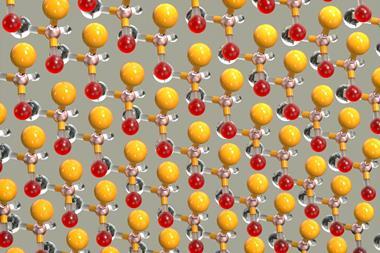A new program can streamline the process of creating, launching and analysing computational chemistry experiments. This piece of software, called AQME, is distributed for free under an open source licence, and could contribute to making calculations more efficient, as well as accelerating automated analyses.
‘We estimate time savings of around 70% in routine computational chemistry protocols,’ explains lead author Juan Vicente Alegre Requena, at the Institute of Chemical Synthesis and Homogeneous Catalysis (ISQCH) in Zaragoza, Spain. ‘In modern molecular simulations, studying a single reaction usually involves more than 500 calculations,’ he explains. ‘Generating all the input files, launching the calculations and analysing the results requires an extraordinary amount of time, especially when unexpected errors appear.’
Therefore, Alegre and his colleagues decided to code a piece of software to skip several steps and streamline calculations. Among other advantages, AQME works with simple inputs, instead of the optimised 3D chemical structures usually required by other solutions. ‘It’s exceptionally easy,’ says Alegre. ‘AQME is installed in a couple of minutes, then the only indispensable input is as a simple Smiles string.’ Smiles is a system developed by chemist and coder Dave Weininger in the late 1980s, which converts complex chemical structures into a succession of letters and numbers that is machine readable. This cross-compatibility could allow integration with chemical databases and machine-learning solutions, most of which include datasets in Smiles format, explains Alegre.
The team tested AQME in a number of ways, including calculating the reaction profiles for a Diels-Alder cycloaddition and the successful simulation of the NMR spectrum of strychnine. Additionally, the programme provides up to 34 chemical descriptors, including energy values, dipole moment, solubility and atomic charges, if coupled with other publicly available algorithms and programs. ‘Moreover, most of the outputs are graphs and plots, which provides an immediate visualisation of the results,’ comments Alegre. ‘AQME also automatically analyses the existence of errors, corrects the calculation files and re-launches the simulations,’ he adds.
‘The program parses the output files of the quantum-chemical calculations to detect common problems, normally … dealt with manually,’ explains Kjell Jorner, an expert in digital and computational chemistry at ETH Zurich, Switzerland. Although experienced computational chemists commonly correct the mistakes manually, in ‘high-throughput calculations [this] would become impossible’.
It’s the inexperienced computational chemists that AQME is aimed at. ‘We’ve designed the program with early-stage researchers and non-experts in mind,’ explains Alegre. ‘The Smiles input is easily generated in ChemDraw, which actually avoids errors in the tedious tasks connected with the creation of input files.’
‘The program has quite good documentation, video tutorials and example Jupyter notebooks,’ Jorner adds. The latter provide an interactive platform to program and visualise the outputs simultaneously, as well as allow comments and figures to facilitate tutorials and trainings. ‘All of this takes time to create, but makes it much easier for non-experts to follow the examples,’ adds Jorner. This matters when researchers need to prioritise results, rather than focusing on the nitty-gritty of calculations and coding. ‘This [approach] is becoming more common in digital chemistry courses, where there is no time to cover computational chemistry in depth,’ he notes.
‘It’s comparable to other toolkits … usually created in individual research groups to automate typical tasks … and then released to wider audiences,’ says Jorner. However, most mature solutions focus on heterogeneous catalysis and materials science, and molecular computational chemistry is ‘a bit behind’, he adds. AQME is a step forward towards more developed toolkits in this field, he explains. Now, ‘it remains to be seen how the authors support the tool over time and if they keep adding additional features’.
Alegre points out the program has been downloaded over 2100 times in only seven months, and expects the publication of the paper will prompt further engagement within the computational chemistry community.
References
JV Alegre-Requena et al, WIREs Comput. Mol. Sci., 2023, e1663 (DOI: 10.1002/wcms.1663)

















No comments yet